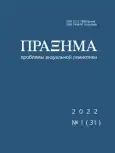The essay is dedicated to the iconographic analysis of the images of Martha and Mary in European paintings. The iconographic tradition with the construction of a visual series of works from the High Renaissance to the Art Nouveau style is analyzed. The formal techniques that determine the poetics of the compositional construction of paintings are described: geometric schemes, spatial plans, attributive signs, etc. As a result of the quantitative analysis, it has been determined that the surge of interest in the visualization of the images of Martha and Mary is characteristic of the Baroque and, to the greatest extent, of Italian and Flemish artists, while the plot is developed in different ways. It has been established that the identification of the image of Mary with the penitent Mary Magdalene is characteristic only for Italian paintings. For works of the Baroque Spanish, Flemish (the exception is the painting by Peter Paul Rubens), and Dutch schools of painting, and, subsequently, for works of academism, realistic art, and symbolism, the plot of Martha and Mary is developed on the basis of the inclusion of the figure of Christ in the compositional scheme, which most corresponds to the gospel text. Based on the iconography of the plot and the anthropological approach to reading the semantics of visual images, the textual and contextual meanings of the visual representation of the images of Martha and Mary are revealed. In the Baroque and in the countries of established and triumphant Catholicism, one of the most important connotations of the plot is the reflection of the opposition of earthly and spiritual wealth, which is eloquently manifested in the interpretation of the images of the sisters and formal compositional techniques. Italian artists’ paintings are dominated by the decision in favor of the beauty and wealth of Mary Magdalene as opposed to the plainness of Martha, who often looks like a servant. In everyday terms, Italian artists develop a motif of rivalry between the two female types, giving preference to the passionate and attractive Mary Magdalene, which is completely unusual for Flemish art, whose iconography speaks rather of the “status quo” that exists between the sisters and their service to the Lord, while the difference between earthly and spiritual service is emphasized not so much by the emotional characteristics of the images, but by the compositional structure and attributes of each of the sisters. Visualization of the question of which of the services leads to heaven, in the figurative solution of the plot about Martha and Mary, appears for the first time in Antonio Allegri da Correggio’s painting, and then, only four centuries later, in the paintings of the Symbolists Maurice Denis and Mikhail Nesterov, who reproduce the figures of Christ, Martha, and Mary against the background of the image of Heavenly Jerusalem. As the main conceptual anthropological characteristic of the plot about Martha and Mary, the dualistic irreducibility of the ways of earthly and heavenly service to each other and, at the same time, the involvement of both of them in the divine plan for man, which, as before, remains an actual existential problem of human existence, is revealed.
 12-23
12-23


 24-40
24-40


 41-53
41-53


 54-74
54-74


 75-89
75-89


 90-102
90-102


 103-126
103-126


 127-152
127-152


 153-170
153-170


 171-193
171-193











